Ready to unleash your inner green thumb and grow delicious veggies from seed? But feeling overwhelmed by all the conflicting advice? Don’t worry, we’ve got you covered! This quiz will bust the myths and guide you through the essential steps of starting seeds indoors like a pro, even in a temperate climate.
Think you know when to plant? Answer our fun questions and discover the secrets to:
- Planting at the perfect time for a bountiful harvest (no more sad, stunted seedlings!)
- Avoiding common mistakes that rookie gardeners make (save yourself the heartache!)
- Unlocking the magic of germination (those tiny green shoots will explode with your newfound knowledge!)
Answer the following questions to reveal your personalized seed-sowing superpower:
When should you start seeds indoors for most vegetables in temperate climates?
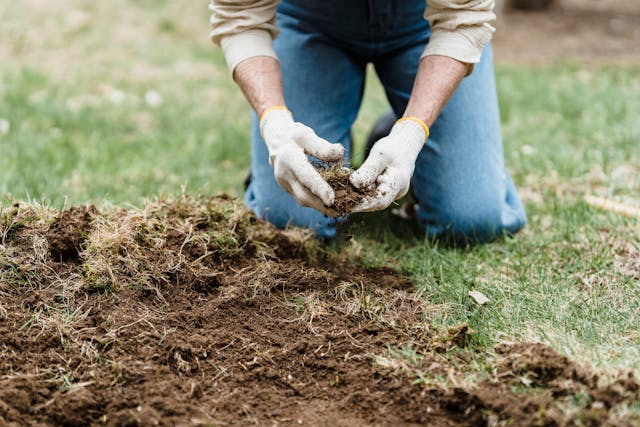
- a 6-8 weeks before the last frost date
- b 1-2 weeks after the last frost date
- c 3-4 months before the last frost date
- d During the last frost date
What's a general indicator that it's time to start seeds for warm-season crops?
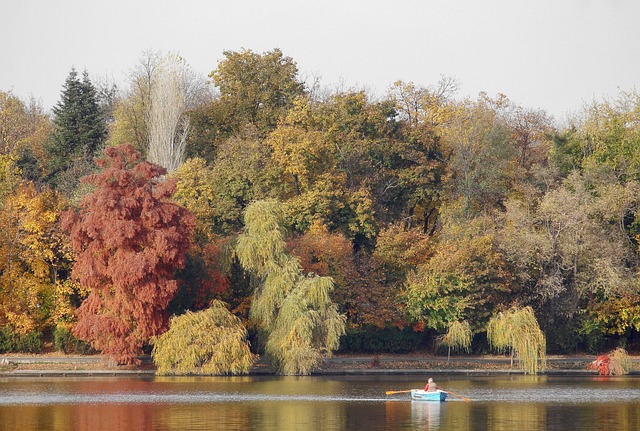
- a When nighttime temperatures consistently stay above 50°F (10°C)
- b When there is still frost on the ground
- c When daytime temperatures are below freezing
- d When the weather starts to get cooler
Why is it important to check the seed packet for specific instructions?

- a To know the specific requirements for each plant variety
- b To see if the seeds are expired
- c To determine the number of seeds in the packet
- d To learn about the history of the seeds
What's a common mistake when starting seeds indoors?
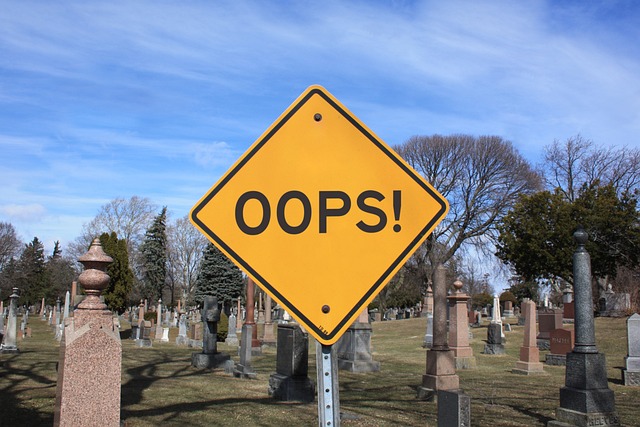
- a Overwatering
- b Providing too much sunlight
- c Planting seeds too deep
- d Using too much fertilizer
What's the benefit of starting seeds indoors rather than directly sowing them in the garden?
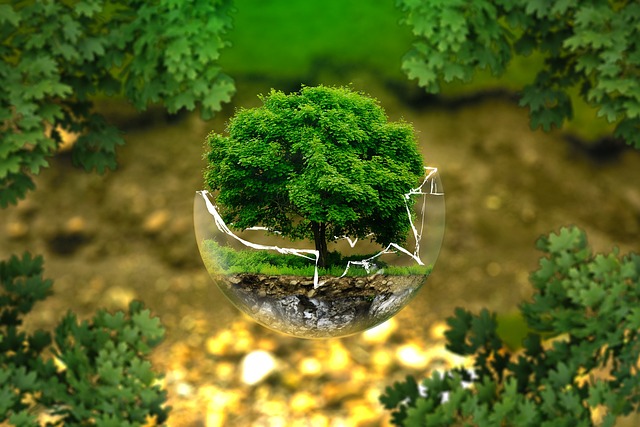
- a Better control over growing conditions
- b Faster germination
- c Avoiding transplant shock
- d Reduced risk of disease
When should you start seeds indoors for most vegetables in temperate climates?
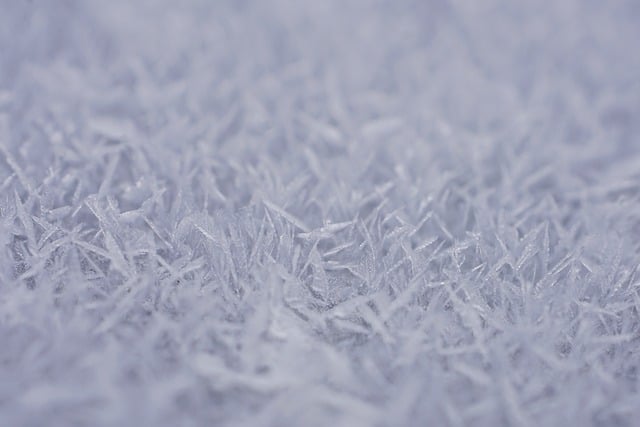
- a During the last frost date
- b 6-8 weeks before the last frost date
- c 1-2 weeks after the last frost date
- d 3-4 months before the last frost date
What's a general indicator that it's time to start seeds for warm-season crops?
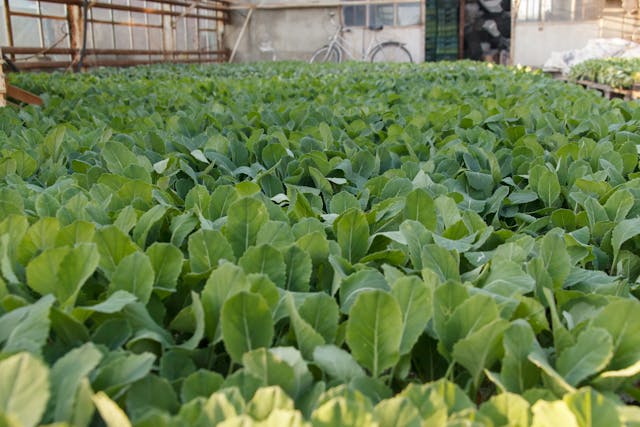
- a When there is still frost on the ground
- b When nighttime temperatures consistently stay above 50°F (10°C)
- c When the weather starts to get cooler
- d When daytime temperatures are below freezing
Why is it important to check the seed packet for specific instructions?
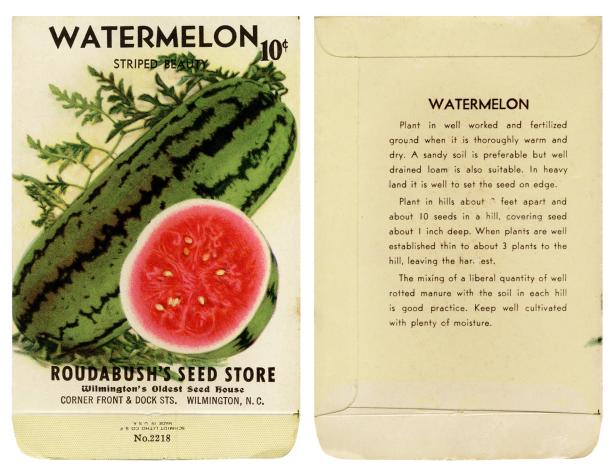
- a To know the specific requirements for each plant variety
- b To see if the seeds are expired
- c To determine the number of seeds in the packet
- d To learn about the history of the seeds
What's a common mistake when starting seeds indoors?
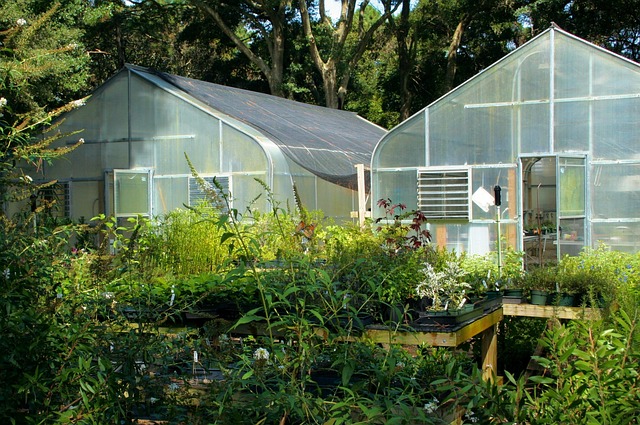
- a Providing too much sunlight
- b Overwatering
- c Using too much fertilizer
- d Planting seeds too deep
What's the benefit of starting seeds indoors rather than directly sowing them in the garden?
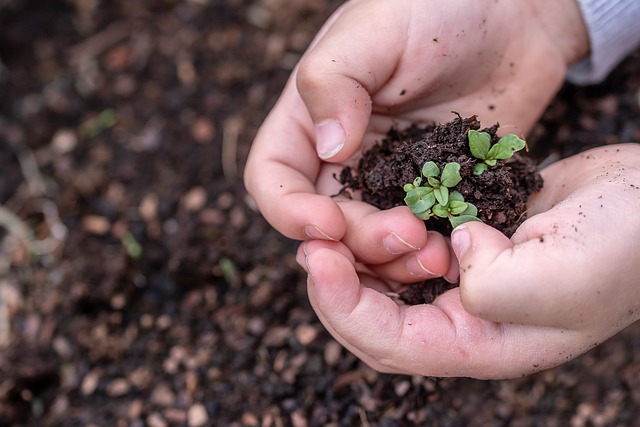
- a Faster germination
- b Better control over growing conditions
- c Reduced risk of disease
- d Avoiding transplant shock
What is the term for the process of hardening off seedlings before transplanting them into the garden?
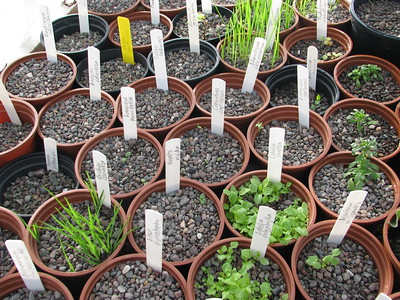
- a Warm-up
- b Frosting
- c Hardening off
- d Thawing
What is the primary purpose of using a seed starting mix instead of garden soil?
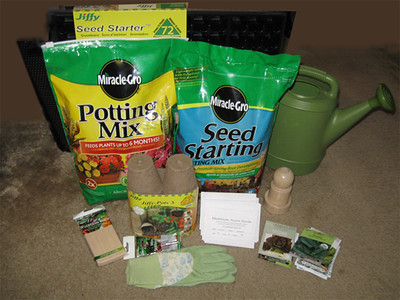
- a To add nutrients to the seeds
- b To reduce watering frequency
- c To improve soil structure
- d To provide a sterile, well-draining medium
What's a sign that seedlings need to be transplanted into larger containers?
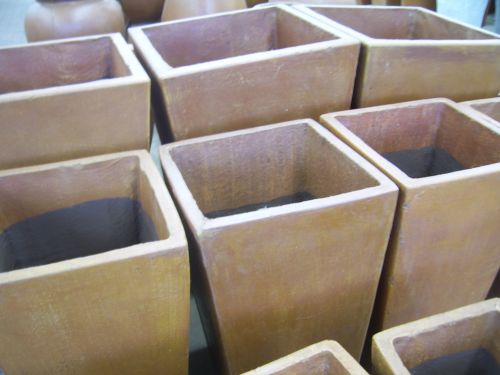
- a When they have 3-4 true leaves
- b When they reach 6 inches (15 cm) tall
- c When roots start to poke out of the drainage holes
- d When the stems become thick and woody
What's the purpose of soaking seeds before planting them?

- a To wash off dirt and debris
- b To increase seed weight
- c To speed up germination
- d To prevent fungal diseases
What's the ideal temperature range for seed germination in most vegetable seeds?
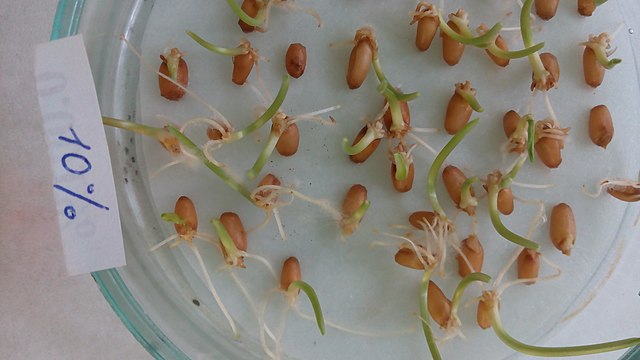
- a Below 40°F (4°C)
- b Between 90-100°F (32-38°C)
- c Between 70-85°F (21-29°C)
- d Above 100°F (38°C)
What's the purpose of thinning seedlings after they emerge?
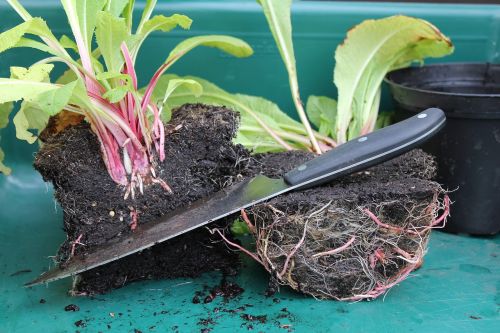
- a To increase humidity around seedlings
- b To remove pests from the seedlings
- c To reduce competition and overcrowding
- d To promote root growth
What's the purpose of scarifying seeds before planting them?
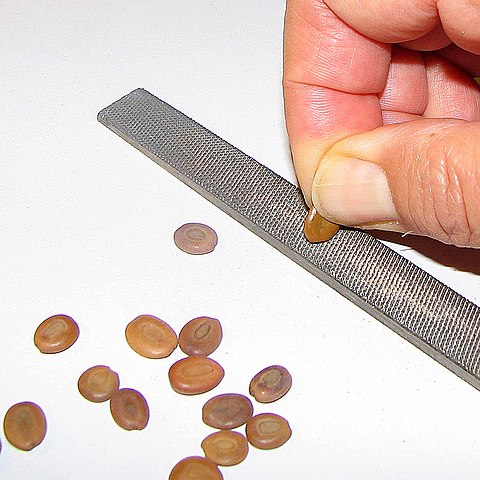
- a To increase seed weight
- b To speed up germination
- c To prevent fungal diseases
- d To wash off dirt and debris
What's the primary purpose of using bottom heat when starting seeds?
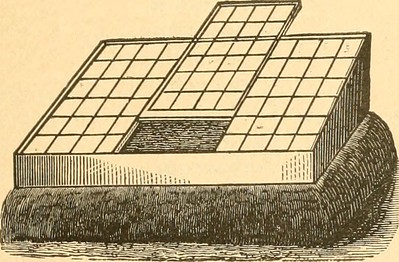
- a To provide light for seedlings
- b To prevent damping off
- c To increase humidity around seedlings
- d To promote faster and more uniform germination
What's the benefit of using a seedling heat mat?

- a To cool down seedlings
- b To provide extra nutrients to seedlings
- c To mimic outdoor weather conditions
- d To promote faster and more uniform germination
What's the purpose of using a humidity dome when starting seeds?
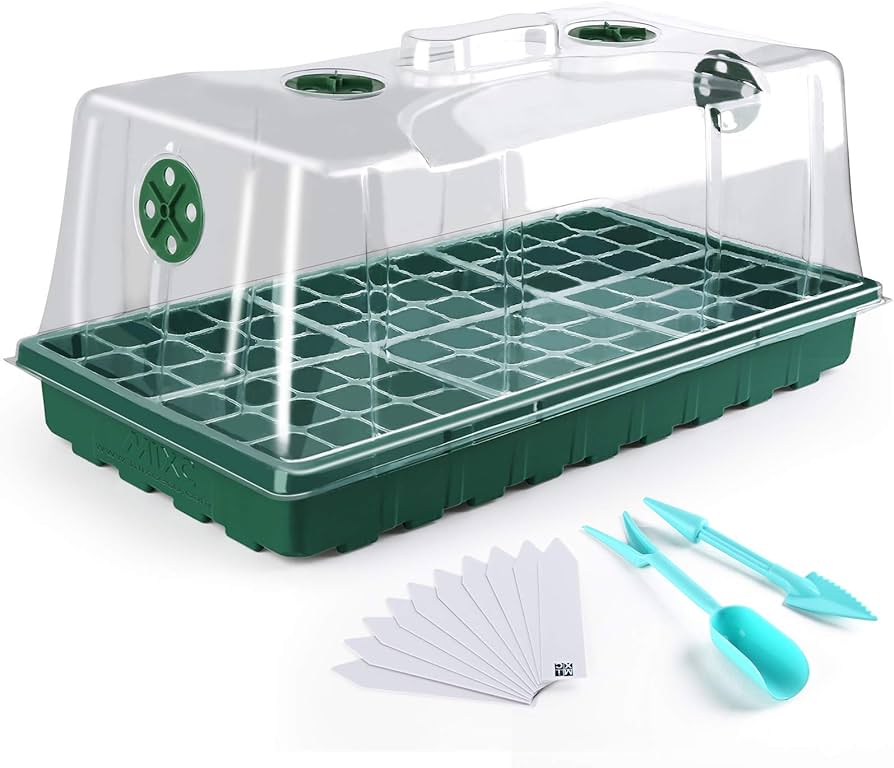
- a To provide extra nutrients to seedlings
- b To mimic outdoor weather conditions
- c To promote faster and more uniform germination
- d To retain moisture around seedlings
What's a common mistake when transplanting seedlings into the garden?
- a Transplanting during the early morning
- b Transplanting when soil is dry
- c Transplanting seedlings too deep
- d Transplanting during rainy weather
What's the purpose of using a grow light when starting seeds indoors?
- a To heat up the soil
- b To increase humidity around seedlings
- c To prevent damping off
- d To provide adequate light for seedling growth
What's a common reason for seedlings to become leggy?
- a Excessive watering
- b Insufficient watering
- c Inadequate light
- d Excessive heat
What's the purpose of hardening off seedlings before transplanting them into the garden?
- a To increase humidity around seedlings
- b To provide extra nutrients to seedlings
- c To prepare seedlings for outdoor conditions
- d To prevent pest infestation
What's a sign that seedlings need more light?
- a Dark green coloration
- b Compact growth
- c Stunted growth
- d Leggy growth or stretching towards light
What's the purpose of providing good air circulation around seedlings?
- a To increase humidity around seedlings
- b To prevent seedling dehydration
- c To reduce pest infestation
- d To prevent fungal diseases and promote strong stem development
What's a benefit of using biodegradable pots for starting seeds?
- a They retain moisture better than plastic pots
- b They are more resistant to mold and mildew
- c They promote faster seedling growth
- d They reduce transplant shock and minimize root disturbance
What's a benefit of using a seedling heat mat?
- a To cool down seedlings
- b To provide extra nutrients to seedlings
- c To mimic outdoor weather conditions
- d To promote faster and more uniform germination
What's the purpose of using a humidity dome when starting seeds?
- a To provide extra nutrients to seedlings
- b To mimic outdoor weather conditions
- c To promote faster and more uniform germination
- d To retain moisture around seedlings
What's a common mistake when transplanting seedlings into the garden?
- a Transplanting during the early morning
- b Transplanting when soil is dry
- c Transplanting seedlings too deep
- d Transplanting during rainy weather
What's the purpose of using a grow light when starting seeds indoors?
- a To heat up the soil
- b To increase humidity around seedlings
- c To prevent damping off
- d To provide adequate light for seedling growth
What's a common reason for seedlings to become leggy?
- a Excessive watering
- b Insufficient watering
- c Inadequate light
- d Excessive heat
What's the purpose of hardening off seedlings before transplanting them into the garden?
- a To increase humidity around seedlings
- b To provide extra nutrients to seedlings
- c To prepare seedlings for outdoor conditions
- d To prevent pest infestation
What's a sign that seedlings need more light?
- a Dark green coloration
- b Compact growth
- c Stunted growth
- d Leggy growth or stretching towards light
What's the purpose of providing good air circulation around seedlings?
- a To increase humidity around seedlings
- b To prevent seedling dehydration
- c To reduce pest infestation
- d To prevent fungal diseases and promote strong stem development
What's a benefit of using biodegradable pots for starting seeds?
- a They retain moisture better than plastic pots
- b They are more resistant to mold and mildew
- c They promote faster seedling growth
- d They reduce transplant shock and minimize root disturbance
What's a benefit of using a seedling heat mat?
- a To cool down seedlings
- b To provide extra nutrients to seedlings
- c To mimic outdoor weather conditions
- d To promote faster and more uniform germination
What's the purpose of using a humidity dome when starting seeds?
- a To provide extra nutrients to seedlings
- b To mimic outdoor weather conditions
- c To promote faster and more uniform germination
- d To retain moisture around seedlings
What's a common mistake when transplanting seedlings into the garden?
- a Transplanting during the early morning
- b Transplanting when soil is dry
- c Transplanting seedlings too deep
- d Transplanting during rainy weather
What's the purpose of using a grow light when starting seeds indoors?
- a To heat up the soil
- b To increase humidity around seedlings
- c To prevent damping off
- d To provide adequate light for seedling growth
What's a common reason for seedlings to become leggy?
- a Excessive watering
- b Insufficient watering
- c Inadequate light
- d Excessive heat
What's the purpose of hardening off seedlings before transplanting them into the garden?
- a To increase humidity around seedlings
- b To provide extra nutrients to seedlings
- c To prepare seedlings for outdoor conditions
- d To prevent pest infestation
What's a sign that seedlings need more light?
- a Dark green coloration
- b Compact growth
- c Stunted growth
- d Leggy growth or stretching towards light
What's the purpose of providing good air circulation around seedlings?
- a To increase humidity around seedlings
- b To prevent seedling dehydration
- c To reduce pest infestation
- d To prevent fungal diseases and promote strong stem development
What's a benefit of using biodegradable pots for starting seeds?
- a They retain moisture better than plastic pots
- b They are more resistant to mold and mildew
- c They promote faster seedling growth
- d They reduce transplant shock and minimize root disturbance
What's a benefit of using a seedling heat mat?
- a To cool down seedlings
- b To provide extra nutrients to seedlings
- c To mimic outdoor weather conditions
- d To promote faster and more uniform germination
What's the purpose of using a humidity dome when starting seeds?
- a To provide extra nutrients to seedlings
- b To mimic outdoor weather conditions
- c To promote faster and more uniform germination
- d To retain moisture around seedlings
What's a common mistake when transplanting seedlings into the garden?
- a Transplanting during the early morning
- b Transplanting when soil is dry
- c Transplanting seedlings too deep
- d Transplanting during rainy weather
What's the purpose of using a grow light when starting seeds indoors?
- a To heat up the soil
- b To increase humidity around seedlings
- c To prevent damping off
- d To provide adequate light for seedling growth
What's the purpose of pruning seedlings?
- a To reduce seedling height
- b To increase seedling humidity
- c To promote root growth
- d To encourage stronger, more compact growth
Why is it important to label seedlings?
- a To prevent diseases
- b To improve seedling growth
- c To maintain proper soil moisture
- d To keep track of different plant varieties and growth patterns
What's a benefit of using a fan near seedlings?
- a To increase humidity around seedlings
- b To prevent seedling dehydration
- c To reduce pest infestation
- d To promote air circulation and strengthen seedlings
What's the purpose of using a heat mat for seedlings?
- a To cool down seedlings
- b To provide extra nutrients to seedlings
- c To mimic outdoor weather conditions
- d To accelerate germination and promote root development
Conclusion:
Congratulations! You’ve completed the quiz and discovered your personalized seed-sowing superpower. Remember, the key to success is following the specific instructions for each vegetable variety you’re planting. With a little planning, patience, and the knowledge you gained from this quiz, you’ll be harvesting delicious homegrown veggies in no time!
Bonus: Don’t forget to share your results with your fellow gardening enthusiasts and spread the seed-starting love! Happy growing!
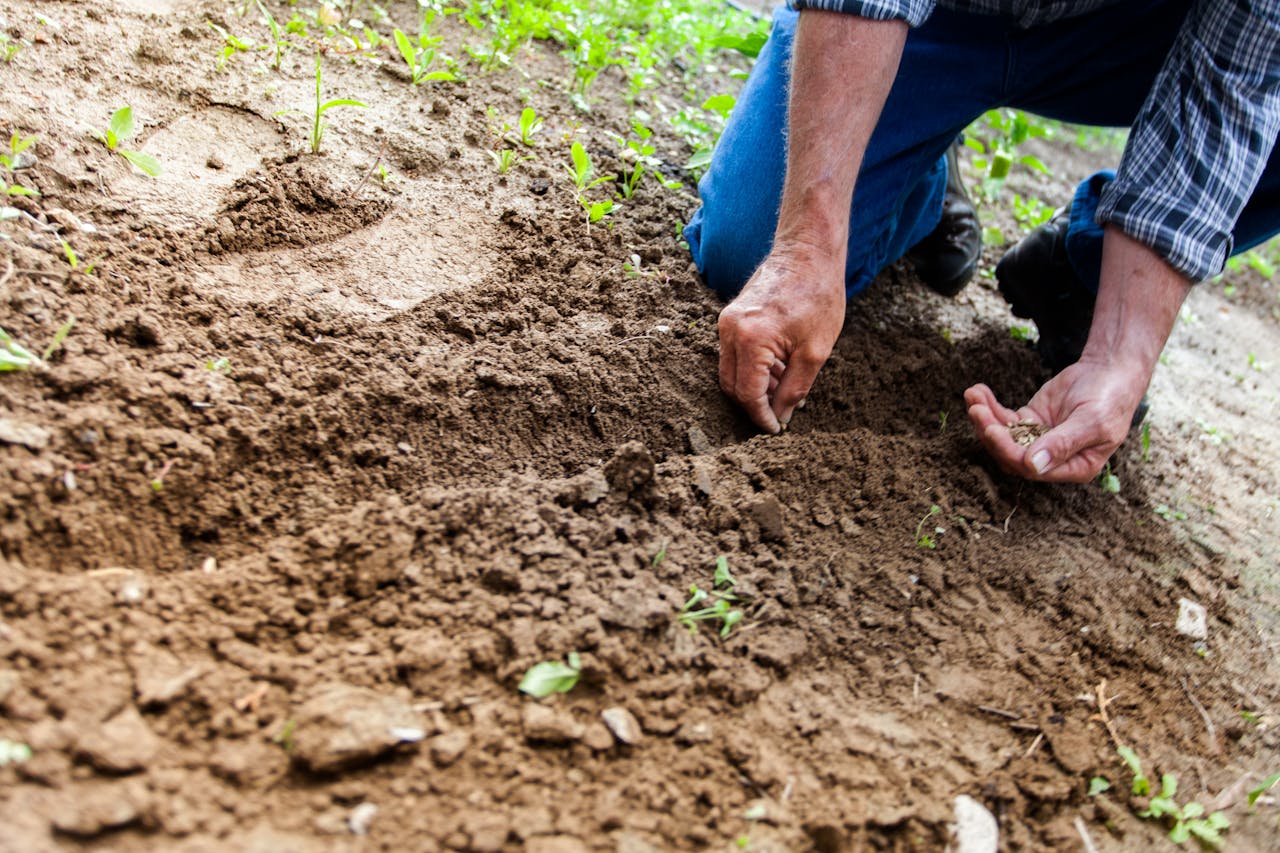
Leave a Reply